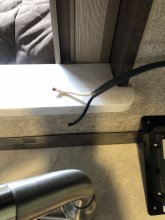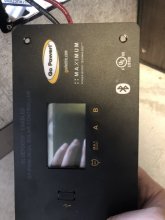moonlitsouls
New Member
- Joined
- Jan 4, 2021
- Messages
- 424
Hope all is well
My solar charge controller is not pulling any amps , it lights up and clearly has power but no amps are being drawn from the solar panels , after review of the troubleshoot tips from the manufacturer, it was determined my first orders of business were to check the connections at the back of the solar charge controller
I started by pulling the 12v disconnect switch on the camper itself , it was my understanding this disconnects all 12v systems including the battery
I then unscrewed the solar charge controller from the wall mounted space and then proceeded to unplug the battery cables one and two, my intention was to inspect the connections
upon attempting to screw the positive battery wire back into the solar charge controller (this seemed loose so I started with that). I saw the solar charge controllers lights flicker and I hear a spark when I attempt to screw it back in correct
why am I seeing a spark at the charge controller when I disconnected the 12v battery system?
My solar charge controller is not pulling any amps , it lights up and clearly has power but no amps are being drawn from the solar panels , after review of the troubleshoot tips from the manufacturer, it was determined my first orders of business were to check the connections at the back of the solar charge controller
I started by pulling the 12v disconnect switch on the camper itself , it was my understanding this disconnects all 12v systems including the battery
I then unscrewed the solar charge controller from the wall mounted space and then proceeded to unplug the battery cables one and two, my intention was to inspect the connections
upon attempting to screw the positive battery wire back into the solar charge controller (this seemed loose so I started with that). I saw the solar charge controllers lights flicker and I hear a spark when I attempt to screw it back in correct
why am I seeing a spark at the charge controller when I disconnected the 12v battery system?






